Thu, 15 Jan 2015 . Last updated Sat, 28 Mar 2015 10:19
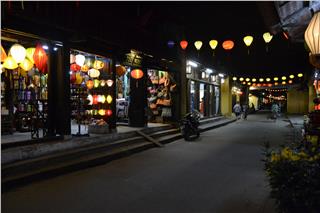
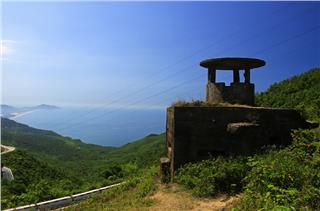
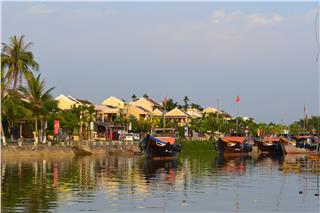
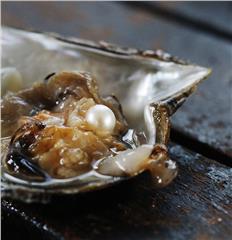
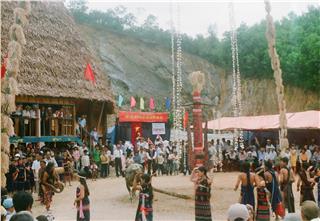
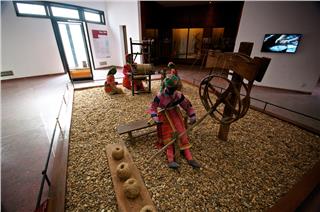
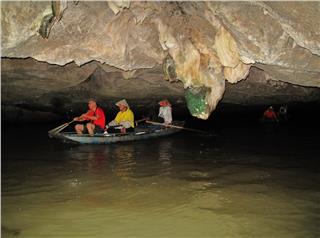
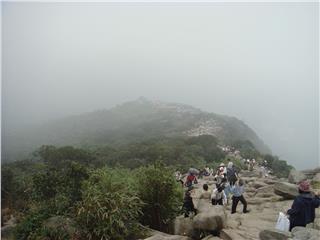
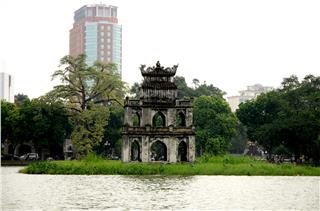
Located on the famous heritage path of the Central region, it is where the most unique ancient houses of Vietnam are kept, where architectural buildings imbued with Vietnamese identity are restored, where visitors can experience ancient housing space with interesting feelings. It is the enthusiasm of the people who want to save the beauty of Vietnamese architecture for the next generations. This site has been recognized as the biggest museum of ancient houses in Vietnam.
Quang Nam is famous for Hoi An ancient town and My Son Sanctuary. These are two favorite destinations of visitors to the land. There is a new place in the area that attracts many visitors, it is Vinahouse Museum, a unique museum of Vietnamese ancient houses and architectural buildings, in La Qua village, Dien Ban commune, Quang Nam province.
Lying on the path connecting the two world heritages of Quang Nam - My Son sanctuary and Hoi An ancient town, Vinahouse Space impresses visitors with its outer part. The typical feature is shown through the image of four wooden pillars surrounding a square stone boulder, all lean on a cycads tree as if it embraces strength and vitality, creating a stable space of traditional Vietnamese culture. Especially, the three entrances to the museum are designed according to typical styles of the three regions of Vietnam.
The entrance to Dong Binh Mon on the left is simulated and stylized from the gates of ancient Vietnamese people such as Hoi An and Northern town. It is normally called “town gate”. The road behind the gate takes visitors to the inside space. On the two sides are two rows of yellow bamboo plants, which symbolize gentlemen’s spirit and willingness to receive bosom friends. Right behind this Northern-style gate is a Northern-style house. It is called “Phuong Dinh” because it lies on a square space and was built on a semicircular lake. Therefore, it is also called “Thuy Dinh” (water stage), where mandarins sat to watch water puppetry performances. The architecture of house is imbued with Northern style with curved roofs.
Such house can be kept for a long time, up to several hundred years. It is made of ironwood, which is very durable. The pillars are placed on carved stones to avoid being destroyed by wood eaters and to ensure their durability. The carved patterns look so sophisticated. This is a public project, so its patterns are sophisticatedly carved as they are the soul of the house. These items are carefully decorated, as you can see. The artists have breathed life into the patterns and made the houses very unique. They are old tables and chairs collected from other areas. I want to tell you more about the techniques for building the houses. Many special techniques of Northern people have been applied. Over there you can see the meticulous carving technique called “chong ruong gia thu”, below there are beautiful lotuses.
This thatched and bamboo house made according to Quang Nam style was brought and restored by Pham Thi So in Dien Minh, Dien Ban, Quang Nam. It is considered the ancient house with the highest number of farming and fishing tools in Vietnam. Thatched and bamboo houses have become familiar to many Vietnamese people. The house displays many farming and fishing tools. This area often suffers from floods so we can see a boat for the locals to use during the flood season. The thatch used for this house is of high quality. It is heat-insulating. People have covered the roof with a thick layer of thatch, which can be used for more than 10 years.
This is a typical house so the farming and fishing tools here are made from bamboo and wood – environmentally friendly materials. Western visitors often call this house an “eco-house” because if it is destroyed, it will not negatively affect the natural environment. The owners of the museum have restored not only the ancient houses but also their living space for visitors to feel the unique features and the lifestyle of the ancient Vietnamese.
Quang Nam house consisting of three compartments and 4 lean-tos restored from the house of Mrs. Tran Thi Thao in Dai Phu village, Dai Loc commune, Quang Nam province is considered the biggest traditional living house in Quang Nam. Recently, it was recognized by the Vietnam Book of Records (Vietkings) as the house with the highest number of pillars with 108 pillars, 76 of which are made of jackfruit wood and 32 of which are carved with sandstone. According to the owners of the house, it has been owned by 9 generations of people with over more than 200 years.
Northern people often use ironwood for their architectural buildings, while people in Quang Nam often use jackfruit wood, which is popular in Western Quang Nam. Jackfruit wood is durable, hard to be eaten by woodworm, easy to be carved, and its color becomes more beautiful over time. This house is not only big, but also different from others in carving with unique stylized patterns. The ceiling patterns, typical for Dai Loc and Ly Son Island, are subtly carved according to familiar topics such as four seasons, four supernatural creatures and eight weapons. They show the characters of their owners and the talent of the carvers.
Dai Loc area is home to a big sandstone mine. Earlier, Cham people used to take sandstone from here to build the imposing My Son sanctuary. Therefore, the owners of the house could easily build the pillars from sandstone to take them more endurable and beautiful. A house, according to its first meaning, is the place which meets people’s demand for residing and which helps people avoid being hit the harsh weather. “Ruong” (panel) houses in Quang Nam, with sloping roofs covered with yin-yang tiles protect people from the sunny and rainy weathers of the Central region. The roofs help rain water run down easily and prevent the scorching sun from entering the house.
The patterns are very subtle. The patterns are the spirit of the houses, expressing the owners’ aspirations for their houses. That’s why the pay much attention to the patterns, which convey the quintessence of the art of carving. Look at the ceiling, you will realize many sophisticated carvig works. These patterns are typical for Dai Loc area, Dai Ly Son, Quang Ngai. To assess the values of ancient houses, experienced people often look at their trusses. The trusses look like dragons creeping towards the eaves.
One of the people who have made great efforts to protect the ancient houses is Le Van Vinh, who comes from the famous Kim Bong carpentry village of Quang Nam. From a small unit with 10 workers and artisans specializing in restoring ancient houses, Vinahouse, Vinh ‘s company, has restored more than 1,000 traditional wooden houses and dozens of thousands of wood carving works of 14 years of operation. Vinahouse Museum, with the motto of “Restoring Vietnamese houses”, is proof of his effort to preserve the quintessence of Vietnamese carpentry.
In late April, 2014, the Quang Nam People’s Committee signed a decision to establish Vinahouse Museum. This is the biggest private museum in Quang Nam so far. Vinahouse holds many Vietnamese records for ancient houses such as the oldest thatched and bamboo house in Vietnam, and the biggest traditional living house in Vietnam. The museum owners have prepared documents to ask for recognition of many other records such as the most unique ancient glazed pond in Vietnam. Coming to Vinahouse Museum, visitors can admire houses from different regions nationwide. The museum displays a boat station, a guol house of Co Tu people from Quang Nam, a Hue royal octagonal house, Southern quadrangular and hexagonal house and so on. Each house has been restored according to their former design and surrounding living space.
Now I will show you a special Vietnamese architectural style of Vietnamese house: houses in shape of a conical hat. These houses are special because they have typical spaces. This space looks both modern and traditional with conical hats. There are two houses here. The one over there has been recognized by Vietkings as the biggest eco-house in Vietnam. Especially, the roofs of the houses are covered with coconut shells taken from Ben Tre province, Vietnam. The coconut shells are very good because they are heat-insulating and become more endurable over time. That’s why we used them for the house.
This is a blend of modern and traditional architecture. The house is decorated with beautiful hats. I’m holding a hat as well. This section includes 3 conical houses. Over there is a house with small hats. That’s another house with bigger hats. This house is special because its roofs are not supported by a pillar in the middle but by 17 surrounding pillars. These pillars were made of steel trusses. This area house has been considered by Vietkings as the biggest eco-house in Vietnam. Up to 8 million coconuts shells were taken from Ben Tre province and installed to the roofs. Over time, the shells become more stable. That’s why Vinahouse Museum used coconut shells as the main materials for the house.
This house and the palm-leaf conical hats remind Vietnamese people of their homeland. It also makes Quang Nam unforgettable to foreign visitors. In May, 2014, Vinahouse Museum received Vietkings’ certificate for the “biggest museum of ancient houses in Vietnam”. The recognition is worth the efforts that artisans and workers of Vinahouse, the manager of the museum, have made for the unique museum. Going through the ancient houses, visitors can admire the unique features and cultural values of the beautiful heritages preserved well by Vietnamese people. We will find ourselves proud of the traditions and the talent of ancient people when arranging a space for daily activities and for worship. Vinahouse Museum gives visitors fresh feelings and encourages them to preserve traditional beauty from the ancient houses to the craft villages.
Source: VTC10 - NETVIET

 Đặt vé máy bay cho người Việt?
Bấm vào đây
Đặt vé máy bay cho người Việt?
Bấm vào đây
Our service uses cookies for technical, analytical and marketing purposes. See our Cookie và Privacy policies for more information. If you agree to this, just keep browsing.


